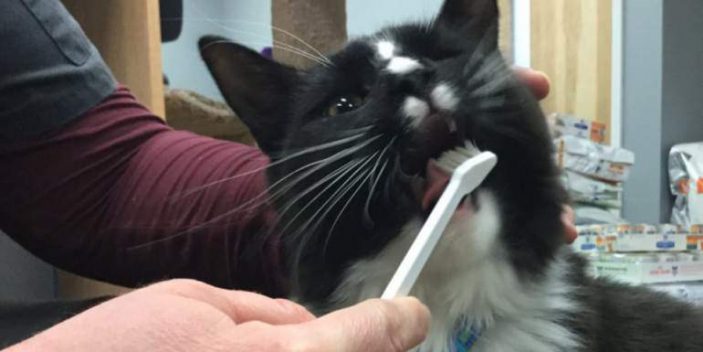Fluorine (F) a diatomic toxic gas that is pale yellow in color while fluoride (F−) is its monoatomic anion and its salt is usually white or colorless.
Foods high in fluoride include shrimp, blue crab, raisins, dental products, among others. Although it is also available in water, most fresh water and fresh foods have very little amount of this mineral.
Previously, this element was considered an essential part of diet for both animals and human beings. However, this is not the case since it has been shown not to have any role in the growth and development of both animals and human beings.
Although not considered as an essential nutrient, this mineral is still important as it helps reduce tooth decay by making enamel impervious and stronger which will slow down its breakdown. A stronger enamel will also make it resist any acid produced by the various oral bacteria and reduce cavities when used topically.

It is also essential for just erupted adult teeth in cats and dogs and 1.23% fluoride solution is topically used in such a case. Ensure your pet does not ingest it (wipe off after use and do it under general anesthesia.
These are the reasons why fluoride is used for making not only human but also toothpaste for cats, dogs, and other animals.
A deficiency of fluorine has been linked to higher incidences of tooth decay and possibly osteoporosis.
Fluoride toxicity in cats
Despite the benefits of fluoride containing toothpaste when used topically, it should be noted that this mineral is poisonous to cats, dogs and other farm animals when they are exposed to high amounts.
In fact, ingesting it can lead to teeth damage as well as musculoskeletal system notes the Environmental Working Group (EWG) in its 2009 paper since it accumulates in bones and may weaken bones (cause skeletal fluorosis).
Common sources of this toxicity include the following:
- Artificially fluoridated products including water, human toothpaste and so on.
- Some sources of water have high amount of this mineral that the maximum allowed in drinking water.
- According to EWC, the “chicken by-product meal, chicken meal, poultry by-product meal, beef and bone meal were found to have highest fluorine among dog foods.”
- Some rat poisons and pesticides used on grapes
- Anesthetic gases, sevoflurane, and isoflurane
Fluoride poisoning symptoms
Chronic case of poisoning may result into various symptoms which include the following:
- Depression
- Diarrhea and vomiting
- Gastroenteritis
- Drooling
- Labored breathing
- Increased heartbeat rate
- Restlessness
- Nervous symptoms such as seizures and stiffness
- Weight loss and muscle wasting
- Sudden death
- Skeletal fluorosis
Risks
There is an increases risk of osteosarcoma as this mineral accumulates in bones and “it may also cause irritable-bowel symptoms and joint pain. Fluoride is a suspect in certain types of kidney and liver damage and possibly hypothyroidism,” notes Little Big Cat.
Diagnosis
Due to the generalized nature of the symptoms shown by fluorine poisoning, testing of urine halide level and history of your cat is necessary.
Treatment
Treatment may include administration of oral magnesium hydroxide or IV administration of calcium gluconate or any other treatment your vet may recommend.
Also, you should consider using fluoride free toothpastes as well as go for purer water and ensure the foods you give your pet are low in this mineral. Reverse osmosis, deionizers and distillers may help reduce the amount of this mineral in drinking water.
Conclusion
Not many studies are available on the effect of fluorine poisoning in cats. However, we recommend minimizing this mineral since it is toxic.

My cat is suffering with kidney disease, from last last year.,and I’m giving renal diet to him,he si in good health till now,,but I brushed his teeth with pet toothpaste on Friday,,two days later he died on Sunday,,all of a sudden everything happened,, actually we take him to vet, the doctor said that there is no blood, and his legs were too weak to stand,,is this all due to fluorine because he has kidney disease,, our family lost a membe because of my mistake,can you reply me please,tell me how it related please
As Science Daily notes, high “fluoride exposure in animals and adults has been associated with kidney and liver toxicity.” In kidneys, in excessive amounts, flourine works as a nephrotoxin, i.e., a toxic agent to kidney that, it inhibits, destroys or damages the kidney cells and/or tissues.
For cats already with kidney disease, their renal function is already impaired and they will have troubles excreting fluoride and its accumulation will be toxic. Instead, go for fluoride-free toothpastes for your cat such as